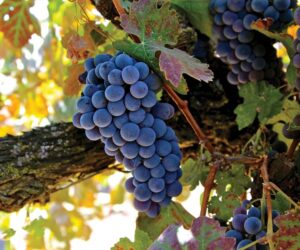 Grapes aren’t the only fruit harvested each fall and turned into tasty fermented beverages. Another one of our favorites is hard cider! And not just cider made from apples, which we’ve covered numerous times in the past (most recently “Making Hard Cider and Apple Wine” in the October-November 2015 issue, but also hard cider from pears.
Grapes aren’t the only fruit harvested each fall and turned into tasty fermented beverages. Another one of our favorites is hard cider! And not just cider made from apples, which we’ve covered numerous times in the past (most recently “Making Hard Cider and Apple Wine” in the October-November 2015 issue, but also hard cider from pears.
Pear cider, or perry, has long been popular in England and just as craft cider has gained popularity in North America, pear ciders have as well — in fact many commercial cider makers offer at least one pear cider in their lineup nowadays. That makes sense, given that pear cider and apple cider follow nearly identical techniques to make. Pear cider can be made using 100% pear juice (some adamantly argue that this is the distinction that separates perry from pear cider, but that’s an argument for another day) or as a blend of cider from fermented juices of both pears and apples. Because pears are less acidic than apples, a 100% pear cider will have less bite and the addition of cider apples will get you somewhere in between.
Just like hard apple cider, there are three popular ways to make pear cider at home — using fresh fruit, making it from juice sold at the grocery store or a farmer’s market, or from a kit.
When making pear cider from fresh pears, the first question to answer is what type of pears should you use? Just like hard apple cider, not all pears work as well, and in general the sweet varieties that are the best to enjoy as a snack are not the best for cider. For cider, the best varieties are those that are high in tannin and acid. These pears are usually smaller than dessert pears and are not intended to be eaten. Known as perry pears, these varieties are not as prevalent in North America as cider apples — but a few of the more recognizable ones you may find include Barnet, Brandy, Gin, and Butt. Other varieties may also be more readily available in your area, depending where you live.
A tricky thing about making pear cider is determining when to press the pears — too early and the sugar levels will be too low, but wait until they become soft and it’s often too late as pears rot from the inside. The best bet is to cut one open and inspect as often as necessary. Because sugar levels are higher in pears than apples, an initial gravity of 1.090 is common for many varieties.
When the fruit is ready, wash and pulp them. This can be done in a blender, juicer, or cider grinder and press. Once the pears have been pulped, it’s a good idea to mix in about 3⁄4 teaspoon of pectic enzyme per gallon (4 L) of pulp, which will make it easier to extract the juice from the fruit and help with clarity of the cider, as well as 1⁄4 teaspoon metabisulfite per 5 gallons (19 L) to help prevent browning. Allow a few hours for the pectic enzyme to work and then wrap the pulp in a cheese cloth and press to extract the juice. If you don’t own a press, they can often be rented from home winemaking retailers or you can build your own. We have shared a couple of different DIY designs for a press, most recently in the December 2015-January 2016 issue.
Once the juice is collected, add yeast nutrient and one Campden tablet for every gallon (4 L) of juice to kill off any bacteria. Then set the juice aside for a day and measure the sugar level. If desired, add sugar to increase the gravity and resulting alcohol level and then pitch your yeast.
Just as with apple cider, the yeast choices range far and wide, but the classic apple cider yeasts would be traditional for perry as well. It’s important to note that sugars in perry pears are not 100% fermentable because they contain sorbitol (a slow-metabolizing sugar alcohol) — meaning even a completely fermented perry will still have some residual sweetness. If you want your cider to be sweeter, try back sweetening (use the same process as described in this article about back sweetening apple cider.
If you want to cut down on some of the work and start with pear juice, the best option is to visit a pear orchard that sells juice, but even pear juice sold in grocery stores will work. The important thing to make sure of is that the juice does not contain any preservatives (like potassium sorbate), which could prevent the yeast from doing its job. Pasteurized or sterilized juice is OK. Then, continue the process as described earlier.
If you prefer to make your cider from a kit, a quick search on the Internet will turn up multiple manufacturers who make this an easy process.
No matter the method, pear cider is a fun take on hard cider that’s sure to be a hit any time of year.






